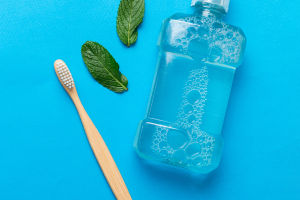In daily lives, choosing the right cup can seem like a trivial decision.
However, the material of the cup you use can have significant implications for your health and the environment.
Let's delve into the safety, health implications, and environmental impact of four common types of cups: glass, ceramic, stainless steel, and plastic.
Glass Cups
Safety and Health Implications
Glass cups are considered one of the safest options available. They are made from natural materials, such as silica, and do not contain harmful chemicals. Glass is non-reactive, meaning it doesn't interact with beverages, preserving the taste and quality of your drink. Additionally, glass cups are free from BPA, phthalates, and other toxic substances that can leach into your drink from some other materials.
Environmental Impact
Glass is highly recyclable, making it an environmentally friendly choice. However, the production of glass requires significant energy, and it is also prone to breaking, which can be a safety hazard and a downside for longevity.
Ceramic Cups
Safety and Health Implications
Ceramic cups, often coated with a glaze, are generally safe for use. However, the safety of ceramic cups largely depends on the materials used in the glaze. Low-quality ceramics may contain lead or cadmium, which can leach into beverages and pose serious health risks. It's crucial to ensure that ceramic cups are lead-free and comply with safety standards.
Environmental Impact
Ceramics are made from natural materials like clay and are durable, often lasting many years. They are less energy-intensive to produce compared to glass. Although not typically recyclable in the traditional sense, ceramics can be ground down and used in other applications.
Stainless Steel Cups
Safety and Health Implications
Stainless steel cups are another safe option, especially high-quality, food-grade stainless steel. These cups do not leach chemicals into beverages and are resistant to corrosion and staining. However, if the stainless steel is of low quality, it may contain nickel or other metals that can cause allergic reactions in some individuals.
Environmental Impact
Stainless steel is durable and long-lasting, often outlasting other materials. While the production of stainless steel is energy-intensive, its longevity and recyclability make it a relatively sustainable option. Stainless steel can be recycled repeatedly without losing its quality.
Plastic Cups
Safety and Health Implications
Plastic cups are the most controversial in terms of safety. Many plastic cups contain BPA or other harmful chemicals that can leach into beverages, especially when exposed to heat. Even BPA-free plastics can release other harmful substances over time. Long-term use of plastic cups can lead to ingestion of microplastics, which have potential health risks that are still being studied.
Environmental Impact
Plastic is notoriously harmful to the environment. It is derived from non-renewable fossil fuels and contributes to pollution and waste. While some plastics are recyclable, the process is often inefficient, and much of the plastic ends up in landfills or oceans, where it can persist for centuries.
When considering safety, health implications, and environmental impact, glass and stainless steel cups emerge as the top contenders. Glass cups are free from harmful chemicals and maintain the integrity of beverages, but they are fragile. Stainless steel cups offer durability and safety but ensure they are of high quality to avoid potential allergic reactions. Ceramic cups can be safe if they meet safety standards, but always verify the absence of harmful glazes. Plastic cups, despite their convenience, pose significant health risks and environmental challenges and are the least recommended option for long-term use.
The safest choice depends on individual preferences and circumstances. For those prioritizing health and environmental impact, glass and stainless steel are the best options. By making informed choices about the cups we use, we can protect our health and contribute to a more sustainable world.


